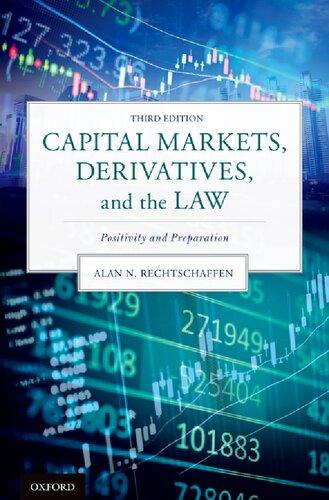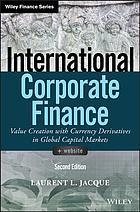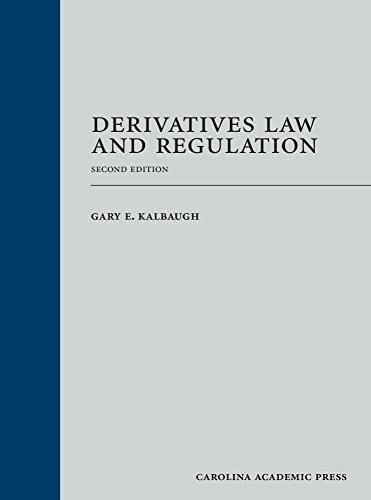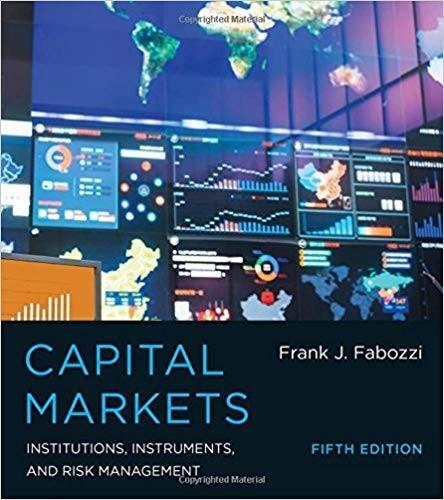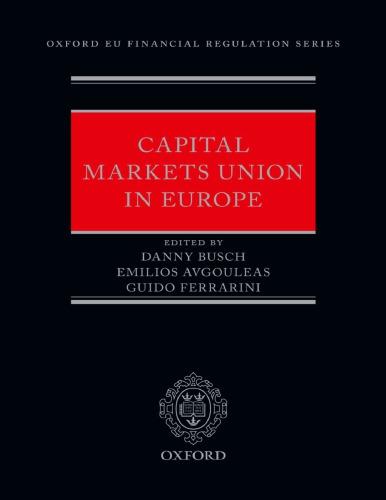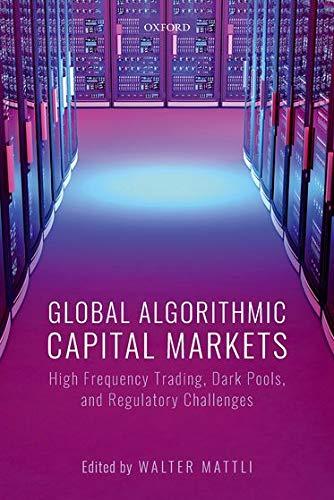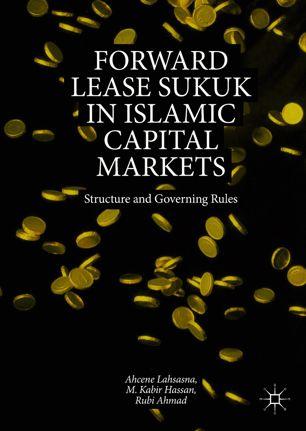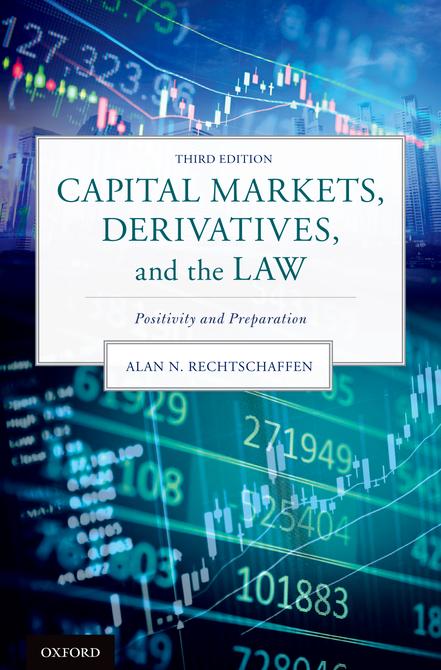1
Oxford University Press is a department of the University of Oxford. It furthers the University’s objective of excellence in research, scholarship, and education by publishing worldwide. Oxford is a registered trademark of Oxford University Press in the UK and certain other countries.
Published in the United States of America by Oxford University Press 198 Madison Avenue, New York, NY 10016, United States of America.
© Alan N. Rechtschaffen 2019
First Edition published in 2009 Second Edition published in 2014
All rights reserved. No part of this publication may be reproduced, stored in a retrieval system, or transmitted, in any form or by any means, without the prior permission in writing of Oxford University Press, or as expressly permitted by law, by license, or under terms agreed with the appropriate reproduction rights organization. Inquiries concerning reproduction outside the scope of the above should be sent to the Rights Department, Oxford University Press, at the address above.
You must not circulate this work in any other form and you must impose this same condition on any acquirer.
Library of Congress Cataloging-in-Publication Data
Names: Rechtschaffen, Alan N., author.
Title: Capital markets, derivatives, and the law : positivity and preparation / Alan N. Rechtschaffen.
Description: Third edition. | New York : Oxford University Press, [2019] | Includes bibliographical references and index.
Identifiers: LCCN 2018048101 | ISBN 9780190879631 ((hardback) : alk. paper)
Subjects: LCSH: Financial instruments—United States. | Derivative securities— Law and legislation—United States. | Capital market—Law and legislation—United States. | Securities industry—Law and legislation—United States.
Classification: LCC KF1070 .R42 2019 | DDC 346.73/096—dc23
LC record available at https://lccn.loc.gov/2018048101
9 8 7 6 5 4 3 2 1
Printed by Sheridan Books, Inc., United States of America
Note to Readers
This publication is designed to provide accurate and authoritative information in regard to the subject matter covered. It is based upon sources believed to be accurate and reliable and is intended to be current as of the time it was written. It is sold with the understanding that the publisher is not engaged in rendering legal, accounting, or other professional services. If legal advice or other expert assistance is required, the services of a competent professional person should be sought. Also, to confirm that the information has not been affected or changed by recent developments, traditional legal research techniques should be used, including checking primary sources where appropriate.
(Based on the Declaration of Principles jointly adopted by a Committee of the American Bar Association and a Committee of Publishers and Associations.)
You may order this or any other Oxford University Press publication by visiting the Oxford University Press website at www.oup.com.
B’H
Thank you for Miera, Ronit, Evie, Sarah, Emunah, my mother, my father, and my teachers. Thank you to Miera for more things than I could ever say.
Thank you Josh, Tevi, Jason, and R. Green for your friendship.
And thank you to my students who are an unstoppable source of inspiration and positivity.
Alan Rechtschaffen
Acknowledgments xix
Preface xxiii
Introduction xxv
1. The Financial Crisis: The Seeds of New Regulation 1
I. Origins of the Great Recession 5
II. Subprime Lending 6
III. Government-Sponsored Entities 6
IV. Legislative Reforms 9
A. Multiple Guarantor Model 10
B. Multiple Insurer Model 11
2. The Liquidity Crisis and Government Reaction 13
I. Buildup to Crisis 13
II. Providing Liquidity and Stabilizing the Financial Markets 18
III. Regulatory Reaction at the Height of the Crisis 19
A. The Emergency Economic Stabilization Act 19
B. American Recovery and Reinvestment Act 21
IV. Dodd-Frank 23
3. Dodd-Frank and the Regulation of Depository Institutions Capital Requirements 25
I. The Volcker Rule and “Too Big to Fail” 26
II. Bank Holding Companies and Systemically Significant Nonbanks 29
III. Living Wills, Credit Exposure Reports, and Concentration Limits 32
IV. Other Prudential Standards 35
4. Using Financial Instruments 37
I. Goal- Oriented Investing 37
A. Using Financial Instruments to Hedge Risk 39
B. Using Financial Instruments to Enhance Yield 39
C. The Economy’s Impact on Financial Instruments 40
II. Achieving Investment Goals 41
A. The Investor’s Perspective 41
B. Financial Instrument Objectives 43
III. Managing Risk 45
5. Financial Instruments and the Capital Markets 47
I. The Capital Markets 48
A. Primary versus Secondary Markets 49
B. Long-Term versus Short-Term Marketplaces 50
C. Case Study: The Auction Rate Securities (ARS) Market 50
II. Financial Instruments 51
A. Types of Financial Instruments 51
1. Equity-Based Financial Instruments 51
2. Debt-Based Financial Instruments 52
3. Derivatives 53
4. Cryptocurrency and Digital Assets 54
B. Distinction between Debt and Equity 54
C. Federal Regulation 57
III. The Role of the Attorney 61
A. Competent Representation 61
B. Duty to Advise Client 61
C. Drafting Financial Instruments 62
D. Regulatory Compliance 62
E. Opinion Letters 63
6. Bureau of Consumer Financial Protection 65
I. Structure 66
II. Roles and Function of the BCFP 68
A. The Bureau’s Regulatory Authority 68
B. The Bureau’s Supervisory Authority 69
C. The Bureau’s Enforcement Authority 70
III. Significant Changes in Financial Consumer Protection by the BCFP 70
A. The Judicial Review of BCFP’s Power 71
IV. BCFP under President Trump’s Administration 73
V. The Judicial BCFP Structures under President Trump’s Administration 77
A. Constitutionality of the Bureau 77
B. Single Directorship 77
VI. Ongoing Enforcement Action Status 78
A. Wells Fargo Case 78
7. Understanding Interest Rates and the Economy 81
I. Background 82
A. The Federal Reserve 82
B. The Federal Reserve Banking System 83
1. Composition 84
2. Purpose 84
3. Responsibilities 85
II. Economic Indicators and Interest Rates 86
A. Key Economic Statistics 86
1. Statistics 88
B. Monetary Policy Objectives 92
C. Inflation Targeting 95
III. Monetary Policy: The Financial Crisis and Beyond 96
IV. Quantitative Easing 97
A. Balance Sheet Normalization 104
B. Fiscal Considerations 106
V. FOMC Minutes 107
8. Asset Valuation 111
I. The Use of Interest Rates in Asset Valuation 111
II. Interest Rate Yield Curve 112
A. Types of Yield Curves 113
B. Why the Yield Curve May Be Flat or Inverted 117
1. Increase in Market Demand for Long-Term Securities 117
2. Long-Term Yield Affected by Federal Reserve Monetary Policy 118
9. United States Treasury Securities 121
I. Purpose and Goals 122
A. Risk-Free Nature 123
B. Primary Dealers 124
II. Description of U.S. Treasury Securities 125
A. Types of Treasury Securities 125
1. Treasury Bills 125
Contents x
2. Treasury Notes and Bonds 126
B. Pricing 126
1. Discounts and Premiums 126
2. Factors Affecting Yield 127
III. Bond Auctions and Price 128
A. Interruption of Supply: SEC v. Davis et al. 129
B. Manipulation of the Auction Process: United States v. Salomon Brothers 130
IV. Interest Rates 132
A. Fixed-versus Floating-Rate Securities 132
B. Treasury Inflation-Protected Securities (TIPS) 132
V. STRIPS 134
A. Description 134
B. Valuation 134
C. Uses 135
D. Abuses: In the Matter of Orlando Joseph Jett 136
10. Debt Securities 139
I. Description 140
A. Features of Bonds 140
B. Types of Bonds 141
C. The Indenture 142
II. Bond-Rating Agencies 142
A. Independence and Conflicts of Interest 144
B. Regulation of Bond-Rating Agencies 146
III. Special Types of “Debt” Instruments 146
A. Repos 146
1. Description 146
2. Orange County Case Study 147
B. Mortgage-Backed Securities 149
1. Mortgage-Backed Bonds 150
2. Pass-Through Securities 150
3. Collateralized Mortgage Obligations and Real Estate Mortgage Investment Conduits 151
4. Stripped Mortgage-Backed Securities (SMBS) 151
5. Subprime Mortgage Crisis 151
IV. Securities Act Registration 152
A. Government Securities 153
B. Government Agency Securities 153
C. Municipal Securities 154
1. SEC Disclosure Requirements 154
2. MSRB Disclosure Requirements 154
D. Corporate Debt Securities 155
1. Securities Act Requirements 155
2. Trust Indenture Act Requirements 155
E. Private Placements of Debt Securities 156
11. Derivatives 157
I. Introduction 158
A. Description 158
B. Counterparty Credit Risk 158
C. Over-the- Counter versus Exchange-Traded Derivatives 161
D. Exchange-Traded versus OTC Derivatives 162
II. Shifting Risk 163
A. The Concept of Leverage 163
B. Basis Risk 164
C. Market Risk 164
D. Effective Tools of Risk Management 165
III. Types of Derivatives 165
A. Forwards 165
B. Futures 166
1. Reduction of Counterparty Risk 167
2. Suitability as Hedging Instruments 167
C. Distinction between Forwards and Futures 168
D. Foreign Exchange Forwards and Futures 169
E. Options 170
F. Swaps 172
1. Characteristics of Swaps 172
2. The ISDA Master Agreement 173
G. Credit Derivatives 174
Appendix CME Filing: Self- Certification for the initial listing of the Bitcoin Futures Contract 176
12. Types of Swaps 199
I. “Plain Vanilla” Interest Rate Swaps 200
II. Currency Swaps 202
III. Credit-Default Swaps 203
A. Purpose and Function 204
B. ISDA Master Agreement 206
C. Importance of Clearly Defined Terms 206
1. Credit Event 207
2. Reference Entity 209
D. Collateralized Debt Obligations 214
E. OTC Derivatives and the Financial Crisis 215
IV. The Move toward Regulatory Reform 220
A. The Central Clearing Model 221
B. The OTC Model 222
C. Confidence in the New Regulatory Regime: The Case of MF Global 223
13. Options 231
I. Characteristics of Options 232
II. How Options Work 233
A. Calls and Puts 234
1. Call Option 234
2. Put Option 235
B. Case Study: Levy v. Bessemer Trust 235
1. Facts 235
2. Theories of Liability in Levy 236
III. The Black-Scholes Model and Option Pricing 238
A. Assumptions 238
B. Required Data 238
C. Volatility 239
1. Types of Volatility 239
2. Measures of Volatility 240
D. Authority of the Black-Scholes Model 241
IV. Delta Hedging 242
A. Contracts That Are Economically Options 244
B. OTC versus Exchange-Traded Options 245
C. Regulation of Options 246
V. Option Strategies 247
A. Synthetic Call 248
B. Covered Call 248
C. Collar 248
14. Regulation of Swaps 249
I. The Dodd-Frank Regulatory Regime 250
A. Dodd-Frank and Derivatives Trading 250
B. Jurisdiction and Registration 252
C. Clearing Requirements, Exchange Requirements, and the End-User Exemption 254
D. Capital and Margin Requirements 259
E. Reporting Requirements 260
1. Commodity Position Limits 261
F. Futures Commission Merchants, Dodd-Frank, and Regulation 1.25 262
1. Title VII Enforcement 263
2. Updated Enforcement Advisory on Self-Reporting and Full Cooperation 263
3. Enforcement Actions for Data Reporting Violations 265
4. Action for Failure to Submit Accurate Large-Trader Commodity Swap Reports 266
5. Increase of CFTC’s Enforcement Actions following the Change of CFTC Chairman 267
6. Reduction of Counterparty and Systemic Risk 267
a. Counterparty Risk 268
b. Systemic Risk 270
G. Rationale behind Exemptions and Exclusions 271
1. The End-User Exemption 271
2. Physical Settlement Exclusion 273
3. Customization Exceptions 273
H. The Lincoln Rule 274
1. Futures Commission Merchants 275
I. Criticisms of Dodd-Frank’s Derivatives Trading Provisions 276
1. Concentration of Systemic Risk in Clearinghouse and “Too Big to Fail” 276
2. Exceptions Swallowing the Rule: Incentivizing of Customization and De Minimis Exceptions 277
3. Lack of Global Harmonization 278
4. The Impact of the Change of U.S. Administration 279
5. The Change of CFTC Chairman 279
a. CFTC’s New Priorities 280
b. Improving SEF rules 280
c. Fixing Data Reporting 280
d. Achieving Cross-Border Harmonization 281
e. Project KISS 281
6. Recent Actions of the CFTC and Announcements of Further Actions to Come 282
a. Amendment of Swap Trading Rules 282
b. Review of Swap Dealers De Minimis Threshold 283
c. Review of Position Limits 283
d. Improvement of Clearinghouse Stress Testing 283
7. Propositions of Reforms from the U.S. Treasury Report on Capital Markets 284
15. Securities Regulation 287
I. Regulatory Overview 288
A. The Securities and Exchange Commission 288
1. Jurisdiction 288
B. What Constitutes a Security 290
1. Stocks 290
2. Notes 292
3. Investment Contracts—The Howey Test 298
a. Control and Splitting the Transaction 304
b. Prepurchase Efforts 307
c. State Regulation and the Hawaii Market Test 308
C. Sellers’ Representations 310
D. Consequences of Securities Violations 311
1. Preliminary Injunction 312
2. Disgorgement 313
3. Permanent Injunction 313
4. Antifraud Statutes 314
5. Attorney’s Potential Liability 314
E. Hedge Funds 315
1. Post-crisis Hedge Fund Regulation 319
2. Other Regulations 320
II. Derivatives Regulation: The SEC after Dodd-Frank 321
Appendix A: Implementing the Dodd-Frank Wall Street Reform and Consumer Protection Act 323
Appendix B: Checklist for Stocks, Notes, and Investment Contracts 323
16. Suitability 325
I. The Suitability Doctrine 326
A. Suitability Duty 326
B. Scope and Applicability 327
C. Control and Enforceability 327
D. Investment Advisors 328
1. Rule: A Fiduciary Standard 328
E. Scope and Applicability 329
F. Control and Enforceability 330
G. Basis of the Suitability Doctrine 331
H. Special Circumstances 333
I. FINRA and Self-Regulated Organizations (SROs) 334
1. Financial Industry Regulatory Authority Creation of the Agency 334
J. Rule: A Suitability and Know-Your- Customer Duty 335
K. Scope and Applicability 336
L. Control and Enforceability 337
M. NYSE Know-Your- Customer Rule 337
1. Consumer Financial Protection Bureau 339
2. Scope and Applicability 340
3. Control and Enforceability 341
4. Department of Labor 342
a. Employee Retirement Income Security Act 342
5. Scope and Applicability 343
a. The Antifraud Provisions of the Federal Securities Laws—Section 10b Cause of Action 343
II. Futures and Options: Suitability 345
A. Commodity Futures Trading Commission Disclosure Rules 345
1. Commodity Futures Trading Commission 345
a. Commodity Exchange Act 345
b. Rule: A Suitability and Fair-Dealing Duty 346
c. Scope and Applicability 348
d. Control and Enforceability 348
B. National Futures Association 349
1. Rule: Suitability and Know-Your- Customer Duty 349
a. Scope and Applicability 350
b. Control and Enforceability 350
C. CEA Antifraud Provision 351
D. Municipal Securities Rule-Making Board 351
Appendix A: Various Suitability Rules and Diagrams of Applicability 352
Appendix B: Survey of Rules Adopted by the SEC under Dodd-Frank 360
17. The History of the CFTC 367
I. Role of the CFTC 369
II. Structure 369
III. Disciplinary Action 370
IV. Regulatory Background 371
A. Commodity Exchange Act (CEA) of 1936 371
B. Commodity Futures Modernization Act (CFMA) of 2000 372
C. Jurisdictional Disputes 373
D. The Commodity Futures Modernization Act 373
E. Exclusions 374
F. Forwards 375
G. Options 376
H. Futures 376
I. Regulatory Distinctions between Forwards and Futures 378
J. Swaps 381
K. Hybrid Instruments 383
L. Foreign Exchange Products 384
1. The Treasury Amendment 384
2. CFTC Reauthorization 385
Appendix A: Enforcement Case Study: CFTC v. Amaranth Advisors, LLC 388
Appendix B: Case Study: CFTC v. Zelener 391
Appendix C: Structure of CFTC 393
Appendix D: Case Study: CFTC v. Patrick McDonnell 394
18. Fiduciary Obligation to Manage Risk 397
I. Controlling Risk 398
A. Duty to Manage Risk 398
1. Risk Management for Financial and Non-financial Institutions 400
B. Financial Risk 401
C. Quantifying Financial Risk 402
1. Value at Risk 402
2. Volatility Risk 403
3. Stress Testing 403
D. Portfolio Dynamics 405
II. Operational Risk Management 405
A. Directors’ and Officers’ Understanding of Financial Instruments 406
B. Risk Policy 407
C. Reporting Lines and Audit Techniques 408
D. Empowering Board Members 409
E. Reporting Structures 410
F. Information Flow 411
1. Daily Exception Report 411
2. Red Flags 412
G. Ethical Concerns 412
1. Compensation 412
2. Code of Conduct 413
3. Free Flow of Information 414
H. Flexibility 414
III. Executive Protection 414
A. Responsibility for Risk Management 415
B. Business Judgment Rule 415
C. Education at Financial Institutions 416
D. Disclosure under Sarbanes- Oxley Act 416
1. Disclosures in Management’s Discussion and Analysis (MD&A) 416
2. Off-Balance-Sheet Transactions 417
Appendix A: Case Study: JPMorgan and the London Whale 419
19. Litigation Issues 423
I. Federal Securities Laws 424
A. The Retail Investor: Broker-Dealers and Investment Advisers 424
B. Securities Exchange Act of 1934 Rule 10b-5 Claim 426
C. Securities Act of 1933 428
D. Liability under the Commodity Exchange Act 430
1. Antifraud Provision 430
2. Disclosure 431
II. Common Law Theories 432
A. Breach of Fiduciary Duty 435
B. Common Law Fraud 438
C. Shingle Theory 438
D. Tort Theory 439
E. Contract Theory 439
III. State Blue Sky Laws 439
IV. Swaps Case Study 440
20. Synthesis and Conclusion 443
I. Synthesis 443
II. Structured Note Case Study: Securities and Exchange Commission v. Goldman, Sachs & Co. & Fabrice Tourre 445
III. Historical Example: Erlanger “Cotton” Bonds 447
IV. Range Notes 450
V. Internal Leverage and Market Risk 452
VI. Risks Involved 455
A. Interest Rate Risk 455
B. Liquidity Risk 455
C. Reinvestment Risk 456
D. OCC Warning 456
Index 459
Acknowledgments
Capital Markets, Derivatives and the Law: Positivity and Preparation explains complex financial and legal information in a way that is easy to grasp. While regulation is rapidly evolving, understanding the building blocks of capital market trading activities is valuable far beyond a survey of the latest legal structures.
For more than twenty years, I have taught students at New York University School of Law and at Fordham University. A number of my finest students helped me write and update this book to describe innovation, regulation, and capitulation within the global economy.
We would like to thank each of them for their contribution, and acknowledge their fine work:
Ying-Tien Chen earned both Bachelor’s and Master’s degrees at National Taiwan University and works as an attorney in Taiwan. Tina’s knowledge of the law is broad, having worked internationally in civil, criminal, and domestic relations litigation, including real estate and contract disputes, breach of fiduciary duty claims, fraud, and family law.
Melanie de Marnix, who contributed portions relating to suitability and standards of care, attended NYU Law School after having been an attorney for five years in Brussels, specializing in corporate and finance law. Her experience in advising clients in the Belgian public markets gave her valuable insight into European surveillance authorities and their expected standards of care.
Michael Jaroslawicz earned his JD in 2018 from NYU Law School. While at NYU, he was my teaching assistant and demonstrated depth and understanding in conveying information to others. He simultaneously earned his MBA in 2018 from NYU Stern School of Business, specializing in financial instruments and markets, quantitative finance, and economics. In 2014, he received his BA in economics, magna cum laude, from Yeshiva University.
Maria Khan worked as an attorney in India and the United Arab Emirates, advising on corporate and commercial law, banking and financial law, secondary market transactions, and syndicated financing of aircraft, vessels, and mega-infrastructure projects. Her experience advising clients from India, Singapore, the United Arab Emirates, the European Union, and the United States gives her a unique perspective in global capital markets and regulations.
Giovanni Patti holds an LLM in corporate law from NYU Law School and a PhD in corporate law from the University of Roma Tor Vergata. He served as a graduate editor of the NYU Journal of Law & Business and as a research assistant at the NYU Pollack Center for Law & Business and at the University of Roma Tre.
Alexandre Reignier attended the University of Law of Nancy in France and NYU Law School. He will start his legal career at Cleary Gottlieb Steen & Hamilton, in Paris, with a practice focusing on corporate and financial transactions.
Melanie Simon interned with the capital markets practices of Allen & Overy and White & Case in Paris. She graduated from the banking and financial law master's degree program at Paris II—Pantheon-Assas University. She won the Spitz & Poulle prize for best student in financial services (regulatory) before coming to NYU Law School.
Masahiro Suzuki works as an attorney at Nagashima Ohno & Tsunematsu in Tokyo, specializing in capital market, structured finance, real estate, banking and financial law. He attended Kyoto University and NYU Law School.
Vinca Vinenska contributed a portion relating to the passage covering the current state of the Consumer Financial Protection Bureau. She worked as an attorney at Hiswara Bunjamin & Tandjung, in association with Herbert Smith Freehills in Jakarta, Indonesia, for more than four years, specializing in capital market law, corporate law, mergers and acquisitions, banking, and financial law. In 2018, she received an LLM from NYU Law School in corporation law.
Prachi Tadsare was an incredible help with writing and editing sections of this book. Prachi works as a legal consultant in the Operations Policy Group of the World Bank in Washington, DC, advising on operational issues in finance, specifically in the areas of fragility, conflict, and violence. She received an LLM
Acknowledgments xxi
from NYU Law School after completing her legal education in India. As a student in my class on financial instruments at NYU, Prachi researched capital markets and disruptive technologies, some aspects of which we are excited to incorporate into this edition of the book.
Much of the fine work from former students for the second edition of this book survives in this latest iteration. I wish to once again thank, acknowledge, and send my personal regards to:
Andraz Jadek, who, at the time of the second edition, worked as an attorney in Ljubljana, Slovenia, specializing in corporate and commercial law, mergers and acquisitions, venture capital, securities regulation, banking, and financial law. His experience advising clients from the European Union and the United States, among them large financial institutions, gave him a unique perspective on U.S. capital markets and regulation.
Richard Kim, who contributed portions relating to the passage of DoddFrank and the regulatory developments that ensued. He attended Binghamton University and NYU Law School. While at NYU he was a student in my seminar on financial instruments.
Grant Munyon, who graduated Phi Beta Kappa and with honors from Stanford University with a B.A. in international relations. He graduated in May 2013 from NYU Law School, where he acted as a notes editor for the Journal of Law and Business and participated in the Children’s Rights Clinic.
Omar Radawi, who attended Princeton University and majored in the Woodrow Wilson School of Public and International Affairs. After Princeton, Omar earned a master’s degree in international political economy from the London School of Economics and a J.D. from NYU Law School. His academic background proved invaluable in doing research for this work.
Daniel Wolf, who received his B.A. in economics from the Johns Hopkins University and earned his J.D. (magna cum laude, Order of the Coif) from NYU Law School. His ability to synthesize regulation and economic reality helped me immensely as we reviewed new legislation and the evolution of the capital markets.
And to the students who participated in the first edition, we once again express our gratitude:
Colin Addy, Boriana A. Anguelova, Andrew Arons, Alice Dullaghan, Steven Eichorn, Lee J. Goldberg, David E. Gravelle, Sarah Hayes, Robert A. Johnston, Jim Kelly, Michael Kuzmicz, Benchen Li, Gabriel Mass, Katie McDonald, Robert Pierson, Jr., Justin Quinn, Joshua Riezman, Adam J. Tarkan, and Marshall Yuan.
Preface
This book provides the basic knowledge necessary to understand the financial markets. Much of the work contained in this treatise is adapted from outstanding research by others.
Under my guidance, a group of some of my finest students assembled cases and commentary to explain the capital markets and their evolving regulation.
The structure of this work is based predominantly on the lectures of the author. However, where a regulator, judge, government official or economist describes a financial instrument or a situation better than the author might have, that commentary has been included in its entirety (or paraphrased for editorial consistency) without regard to political affiliation or philosophic disposition.
In synthesizing materials such as the speeches of the Chairman of the Board of Governors of the Federal Reserve System, leading judicial rulings, and government sources from disparate administrations, the book is designed to immerse the reader in the structure and regulatory history of the capital markets. This treatise offers real-world examples of how financial instruments actually work. The outline and methodology is unique. The treatise is designed to cover the functioning of the markets and the various applicable regulatory regimes.
The subject matter cuts across a number of legal disciplines, including securities, corporate finance, banking, financial institutions, and commodities. Cases describe the subject matter and demonstrate to the reader the functioning of the capital
markets. The pedagogical approach is to describe financial instruments in a way that everyone can understand.
As capital market events evolve, it is impossible to freeze time. The treatise seeks to serve as a foundation for understanding world economic events as they unfold. This book covers the basic issues affecting capital markets trading, regulation, litigation, risk management, and internal controls.
It further outlines the basic knowledge that every participant in the capital markets should have of the complexity of the role of the Federal Reserve in U.S. capital markets, the use of financial instruments to manage risk and to enhance yield, and the steps regulators take to address systemic vulnerabilities.
Introduction
After one of the greatest periods of economic turmoil in American history, the capital markets are enthusiastically embracing positivity. Indeed, the idea that America is on the road to economic “Great”ness is seen in positive economic data and domestic stock prices.
Major sources of new-found confidence include a change in the global “animal spirits,” increased liquidity, and a domestic unemployment rate that is approaching record lows. Importantly, regulatory constructs specifically designed to address some of the causes of the great crisis also allowed investors to gain resolve after a potentially apocalyptic time in economic history.
President Trump’s administration clearly embraces a limited regulatory approach. This is a powerful juxtaposition to the crisis-era actions of President Obama, who signed the Dodd-Frank Act into law. Dodd-Frank was designed to reduce systemic risks in the financial and banking sectors through enhanced regulatory control, transactional accountability, and transparency. Under President Trump these regulations have come under increased scrutiny. Secretary of the Treasury Steven Mnuchin explained: “The U.S. has experienced slow economic growth for far too long . . . we examined the capital markets system to identify regulations that are standing in the way of economic growth and capital formation . . . By streamlining the regulatory
system, we can make the U.S. capital markets a true source of economic growth which will harness American ingenuity and allow small businesses to grow.”1
In this period of positivity, it is important to reassess the effectiveness of crisis-era legislation to prevent systemic risk in the future. The overwhelming goal of DoddFrank was to address the causes of the financial crisis.
While there may have been many early warning signs and lessons about frailties within the system that could have prevented the events of 2008, Dodd-Frank attempted to fill in the gaps that existed at the time of the genesis of the Great Recession. The vulnerabilities that came to the fore in 2008 serve as powerful guideposts for the evolution of regulation for generations to come.
As markets respond to monetary and fiscal policy that has enhanced economies around the globe, regulators and legislators continue to devote an enormous amount of attention to ensuring that we have robust financial systems that promote responsible risk-taking and efficient allocation of resources. Despite success, financial stability cannot be taken for granted. While some financial vulnerability is cyclical in nature, rising and falling over time, others are structural, stemming from longer-term forces shaping the nature of credit intermediation.2 Much of the regulation that has evolved in the wake of the financial crisis focuses on four areas of vulnerability that came to the fore during the financial crisis:3
1. Macroeconomic Imbalances
In the context of the financial crisis, macroeconomic imbalances resulted when low interest rates forced investors to create instruments to enhance yield. Foreign investors sent large flows of cash into America seeking higher returns. Such an inflow of cash created financial bubbles as investors abandoned traditional risk–reward analysis in pursuit of disproportional benefit. One area in particular that attracted foreign and domestic investment was real estate. Capitalizing on this “yield chasing,” financial engineers created products that were highly leveraged and often opaque in terms of pricing structure.
2. Unrestrained Entities
Entities such as Fannie Mae and Freddie Mac encouraged investment in real estate by creating inexpensive financing opportunities for home investors by purchasing and
1 Treasury Releases Second Report On The Administration’s Core Principles Of Financial Regulation 10/6/2017 available at https://www.treasury.gov/press-center/press-releases/Pages/sm0173.aspx (last visited February 24, 2019).
2 See: An Assessment of Financial Stability in the United States, June 27, 2017 Vice Chairman Stanley Fischer available at https://www.federalreserve.gov/newsevents/speech/fischer20170627a.htm.
3 Ken Raisler, head of the derivatives group at Sullivan and Cromwell, LLP joined me in a class at New York University School of Law in identifying four key areas leading to the financial crisis.
aggregating mortgages to increase liquidity. Increased liquidity drove the market for real estate higher. As the real estate market rose, financial engineers structured real estate–related investments linked to the underlying mortgages. These instruments were often detached from the underlying asset except in the sense that a small move in the price of the underlying real estate would have far-reaching effects on the economy beyond the initial home price.
At the same time, entities not sponsored by the government such as American International Group (AIG) sold insurance look-alike products (derivatives) that made investors overly confident in taking on risk. Emboldened by the idea that AIG would take the loss in the event of financial default, investors took risks with little consideration of the repercussions of a decline in asset prices that might impact the insuring entity and might actually lead to counterparty failure when AIG was called upon to pay under the terms of its agreements.
As there were no capital requirements for entities such as AIG to engage in this financial engineering, there were no safeguards in place to address the counterparty risk inherent in its contracts. These derivatives contracts looked like tools that could virtually eliminate the risks of an investment.
3. Complex Products
Complex financial instruments, such as derivatives, allowed investors to speculate on contingencies without regulatory or capital restraint. Key to appreciating how derivatives and other financial instruments contributed and arguably caused the financial crisis is looking at how they concentrate risk, and how prior to the crisis they were used to shift risk to systemically important institutions.
The derivatives instrument itself is not inherently problematic. The risk inherent in a derivative contract can be misunderstood, and its use might be misapplied. Valuing models in complex transactions can prove useless when the world operates in new and unpredictable ways.
The derivatives market knows no bounds—a contract whose value fluctuates based on an asset can represent a notional value far in excess of the total amount of the asset that actually exists. Derivatives, therefore, created systemic leverage impacting the entire banking system.
4. Regulators
Regulatory constructs did not evolve as rapidly as the capital markets. As a result, the fragmented regulatory construct of the pre-crisis area allowed transactions and entities to slip through the cracks.
In addition, there was no formal regulatory process for the oversight of the unwinding of systemically important institutions. When the time came and all the coins came up heads, there was no one regulator to oversee the orderly liquidation of systemically important market players.
In summing up the vulnerabilities that existed at the time of the crisis, Ben Bernanke, the crisis-era Chairman of the Federal Reserve, observed:4
The . . . private sector vulnerabilities include the excessive debt taken on perhaps because of the period of the Great Moderation . . . the banks’ inability to monitor their own risks, excessive reliance on short-term funding . . . and increased use of exotic financial instruments like credit default swaps and others that concentrated risk in particular companies or in particular markets.
The public sector had its own vulnerabilities including gaps in a regulatory structure. Important firms and markets did not have adequate oversight. Where there was adequate oversight at least in law, sometimes the supervisors and regulators didn’t do a good enough job. For example, there wasn’t enough attention paid to enforcing banks to do a better job of monitoring and managing their risks. And finally, an important gap that we’ve really begun to look at since the crisis is that with individual agencies looking at different parts of the system, there was not enough attention being paid to the stability of the financial system taken as a whole.
. . . [A]nother important public sector vulnerability . . . were the so called government-sponsored enterprises Fannie Mae and Freddie Mac. . . . In particular, the GSEs, Fannie and Freddie, when they sell their mortgage-backed securities, they provide guarantees against credit loss. So if mortgages go bad, Fannie and Freddie make the investor whole. Now, Fannie and Freddie were permitted to operate within adequate capital. So in particular, they were at risk in a bad situation where there were a lot of mortgage losses. They didn’t have enough capital to pay off, make good those guarantees that they have promised . . . What made the situation even somewhat worse was that Fannie and Freddie besides selling these mortgage-backed securities to investors, they also purchased on their own account large amounts of mortgage-backed securities, both their own and some that were issued by the private sector. So they made profits from holding those mortgages, but again, that created an additional [danger] to the extent that those mortgages were not insured or protected, they were vulnerable to losses and again, without enough capital they were at
4 Ben S. Bernanke, The Federal Reserve and the Financial Crisis, The Federal Reserve's Response to the Financial Crisis, Lecture 3, George Washington University School of Business (Mar. 27, 2012), available at http://www. federalreserve.gov/newsevents/files/chairman-bernanke-lecture3-20120327.pdf
risk. Now an important trigger . . . wasn’t just the house price boom and bust but it was the mortgage products and practices that went along with the house price movements that was particularly damaging.
The result of the vulnerabilities of the pre-crisis economy led to the undoing of the American capital markets. Credit froze, markets tumbled, and institutions failed.
Today we are in a post-crisis world where there is increasing focus on how to moderate the initiatives that were taken to save an economy on the brink of collapse. The new regulatory order was designed to resurrect confidence in the system and to prevent future crises. But President Trump has made the observation that in this post-crisis period, overregulation stymies growth.
The financial crisis not only created new regulation but also laid the groundwork for revolutionary technologies like cryptocurrency, robo-advisors, and artificial intelligence designed to undermine our historic reliance on humans’ ability to make decisions. Bitcoin, for instance, mocked the centralized federal reserve banking system and fiat currency system it sought to replace. The Bitcoin genesis block contained the explicit political message: “The Times 03/Jan/2009 Chancellor on brink of second bailout for banks.”5
Unfortunately, even with history as a guide and computer driven decentralization, humans are still capable of creating macroeconomic imbalances, mistakes, and misfits. The stories we will tell our grandchildren and the fortunes to be made or lost in the years to come will be based on our ability to adapt to realities as they present themselves. No legislation or regulatory authority can replace prudence and thoughtful analysis in seeing what tomorrow might bring—even if decisions are masked by the latest technologies.
With the backdrop of fortified markets and economies, America is experiencing a period of growth, “full” employment, and increasing asset prices. Confidence and investment have greatly improved the U.S. economy. Indeed, the Trump Administration has taken to stimulate growth by cutting taxes and decreasing regulatory burdens. Policies and pro-growth perception have enhanced spending and investment; even trade wars are yet to substantially dampen current economic enthusiasm—but enthusiasm itself can increase risk.
A positive outlook should not be maintained at the expense of prudent policy to manage systemic vulnerabilities. It is incumbent on government to be sensitive to remaining flexible to react to events of unexpected shock that will, no doubt, occur in the years and decades to come. Enhanced regulation has done much to
5 An Abridged History of Bitcoin available at https://archive.nytimes.com/www.nytimes.com/interactive/ technology/bitcoin-timeline.html (last visited February 24, 2019).
